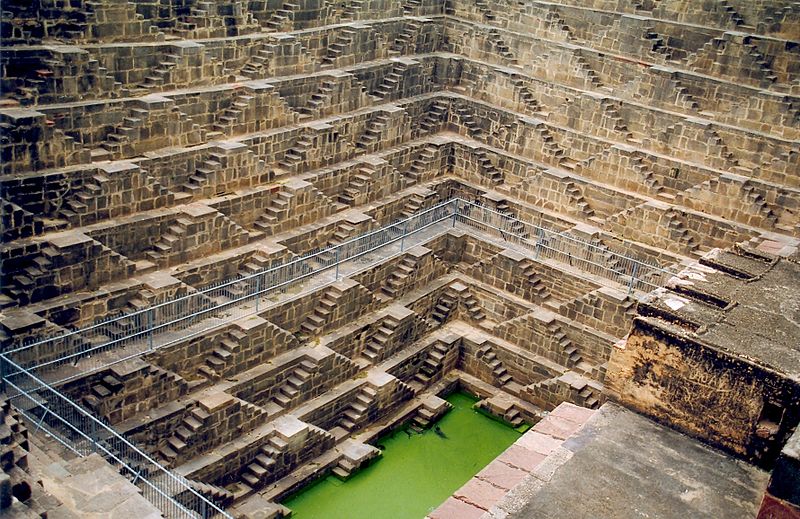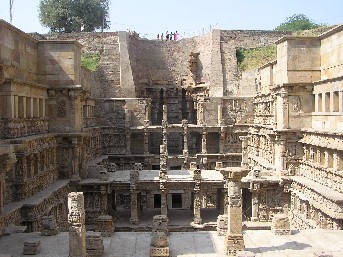Getting in Step


I hesitated in starting the New Year with a Travelogue about a class of watershape that is located beyond easy reach of most readers and is, in addition, one I’ve never seen personally. But I ran across a reference to these structures a couple days ago, and I just can’t get them out of my mind.
Many times in the past, WaterShapes has mentioned the fact that, hundreds of years ago, Islamic architects used fountains and runnels of moving water as air-conditioning systems in enclosed spaces (the Alhambra in Moorish Spain being the usual example). Hundreds of years before that, it seems, Indian architects achieved a similar effect with what they called baolis, or step wells.
For starters, I was a bit startled to find an approach to watershaping I’d never encountered before – but what truly blew my mind was the scale of these structures and the attention their designers paid to the aesthetics of what is basically a utilitarian water source. Indeed, step wells are literally that: structures in which water is reached by descending sets of steps. Found most often in western India, they also were built in other places in southern Asia as well as Pakistan.
Basically, they serve as graduated storage tanks that enabled communities to cope with seasonal changes in water availability: They filled with ground- or well water during the rainy season and were drawn down when the dry, hot weather returned each year. Unlike a classic western fountainhead, which gave a few people access to the water at a time, some of these step wells are huge and clearly enabled whole communities of people (and sometimes their animals) to get at the water at the same time.

and there was more even in hot weather, the body of water pit well cooled air, so grand watershapes became social hubs places to beat heat commune with friends, family acquaintances an office cooler on a scale.
The only similar structure I’ve seen in the United States is the Fort Worth Water Gardens, which I wrote about in the January 25, 2012 edition of this newsletter (click here). But Philip Johnson’s project featured cascading water, which is distinctly something a classic step well didn’t offer.
In any case, this is special watershaping – on the level of the Roman aqueducts in terms of importance to their communities. I hope you enjoy this introduction and, like me, think these places might be worth a road trip.
To see the brief video that introduced me to these amazing watershapes, click here – and do what you can to ignore the narrator’s attempts at humor. And if you want more information, click here to see an unusually helpful Wikipedia trove of information and images.dsc+
desce
///>/</









